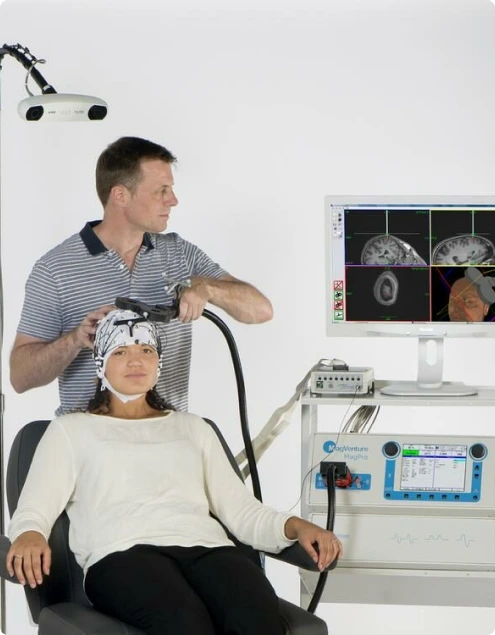Neuronavigation is the most advanced approach to brain mapping in TMS therapy. It uses imaging technology (usually an MRI scan) to create a detailed 3D model of the patient’s brain, allowing the provider to see exactly where they are targeting the stimulation. With the reliable maps created, acquiring data is no longer necessary because the process is automated.
During the first treatment session, small sensors are placed on the patient’s head, working together with a special camera system that tracks their position in real time. This technology provides precise coordinates, matching the TMS coil’s external position with the brain’s internal structures. The provider can see exactly where the magnetic pulses are being delivered, taking the guesswork out of the targeting process.
The real advantage of neuronavigation is its accuracy and reliability. Once the TMS provider identifies the optimal treatment location, they can return to the same spot every time, even if you move your head during treatment. This consistency is crucial for achieving the best possible outcomes.
While the traditional mapping method is still effective, neuronavigation adds an extra layer of precision that can be particularly effective for certain patients or specific treatment goals. Many TMS providers with MagVenture®, Magstim®, and Nextstim® devices use this valuable tool regularly in their practice. It allows them to acquire TMS maps in digital format and automatically adjust coil placement.


